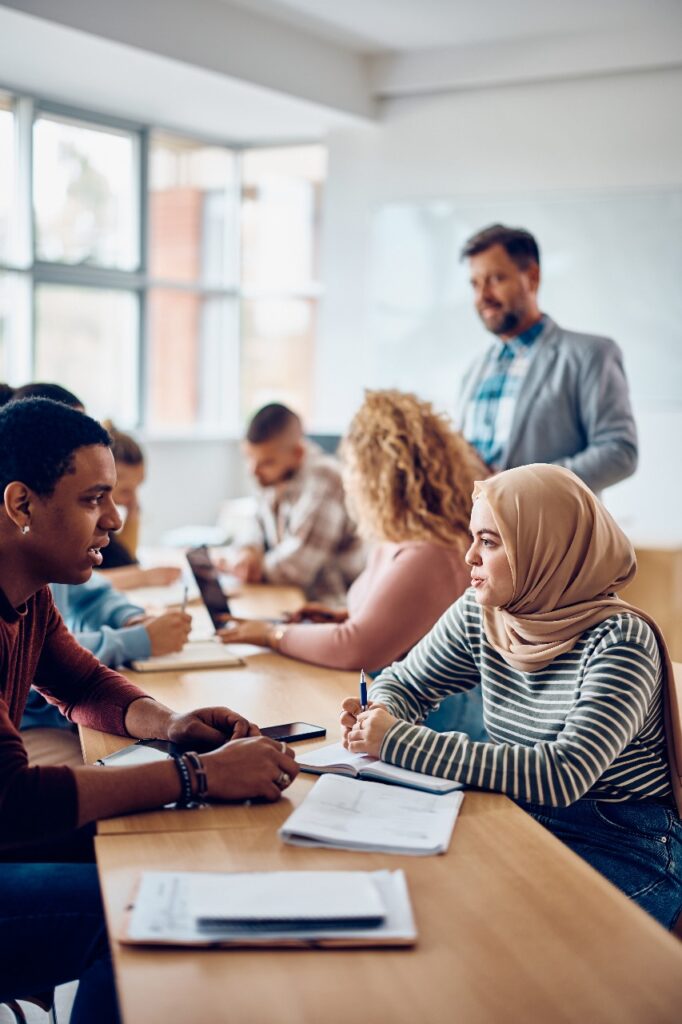
Beta Version
Conversify
- Home
- About Us
- Services
-
Language Translation
- Staffing Solution
- Voice Over
- Local Outreach
- Industries
- International staffing
- Staffing in India
- Multilingual Content Development
- Multilingual Copywriting
- Multilingual micro-websites development
- Life-Science
- Bussiness & Legal
- Manufacturing & Engineering
- IT & Software
- Others
-
- Languages
- Blog
- Contact Us
- Home
- About Us
- Services
-
Language Translation
- Staffing Solution
- Voice Over
- Local Outreach
- Industries
- International staffing
- Staffing in India
- Multilingual Content Development
- Multilingual Copywriting
- Multilingual micro-websites development
- Life-Science
- Bussiness & Legal
- Manufacturing & Engineering
- IT & Software
- Others
-
- Languages
- Blog
- Contact Us
Academic Translations
Conversify India Aids Education Institutions Build Global Presence
Introduction
Conversify India aids colleges, universities, academic institutions and high schools in attaining international success through premier language translation services available in Koran, Spanish Chinese, Arabic, and over 200 other languages.
Suppose you’re an educational institution or public school district with international student enrollment and require translation services for your website, academic transcripts, or class materials into languages such as Spanish, Chinese, Vietnamese, Arabic, and more. In that case, Conversify India is your ideal choice. We offer precise and on-demand education translation services bridging English with Spanish, Chinese, Korean, and over 100 other languages for leading academic institutions and vocational schools nationwide. Whether it’s translating your school’s website, marketing materials, parent consent forms, or student handbooks, Conversify India provides a comprehensive solution for swift and professional education translation needs.
An increasing number of colleges, universities, and high schools are crafting courses and academic programs aimed at attracting international students from countries such as Germany, China, India, and various Asian and European nations. Yet, to effectively engage with prospective foreign students and their parents abroad, educational institutions must translate their websites, course descriptions, and promotional materials into the desired languages with precision and efficiency. This is where Conversify India comes in. With our extensive experience, state-of-the-art localization processes, and linguistic expertise, we deliver unparalleled language solutions. Our sizable team comprises professional native translators and subject matter specialists who excel in accurately translating academic content with profound cultural sensitivity. At Conversify India, we’re at the forefront of the language industry, offering cutting-edge translation technology solutions that empower the nation’s leading colleges and universities to provide an exceptional international student experience across multiple languages.
Connect with Conversify Now!

Benefits of Academic Translation Services
- Enhanced Accessibility: Translating academic materials into multiple languages improves accessibility for international students, non-native speakers, and individuals with diverse linguistic backgrounds, ensuring they can fully engage with course content, resources, and institutional information.
- Expanded Reach: By providing translations, educational institutions can extend their reach to a global audience, attracting prospective students from various countries and cultural backgrounds. This helps in diversifying the student body and promoting cross-cultural exchange and understanding.
- Improved Communication: Effective translation facilitates clear and concise communication between educators, students, and parents, regardless of their native languages. This fosters better collaboration, comprehension, and engagement within the academic community.
- Increased Enrollment: Translating marketing materials, course descriptions, and other academic content into multiple languages can attract more international students, leading to increased enrollment and revenue for educational institutions.
- Cultural Sensitivity: Proper translation ensures that academic content is culturally sensitive and relevant to the target audience, avoiding misunderstandings or misinterpretations that may arise due to linguistic or cultural differences.
- Compliance and Legal Requirements: In some cases, academic institutions may be required by law or accreditation standards to provide translated materials, such as enrollment forms, policies, or academic transcripts, to ensure compliance and meet legal obligations.
- Competitive Advantage: Offering translated academic materials can give educational institutions a competitive edge in the global education market, positioning them as inclusive, accessible, and accommodating to international students' needs and preferences.
- Facilitated Integration: Translations assist international students in navigating the academic environment, understanding course requirements, and adapting to the educational system of the host country, leading to smoother integration and academic success.
Types of Academic Translation Conversify India Provides
- Course Materials: This includes translating course syllabi, lecture notes, presentations, and study guides into different languages to aid comprehension for international students or non-native speakers.
- Academic Papers and Research Articles: Translating scholarly works allows researchers to disseminate their findings to a broader audience and facilitates collaboration between scholars from different linguistic backgrounds.
- Theses and Dissertations: Graduate students often require translations of their theses or dissertations to share their research with international colleagues or submit their work to academic journals published in other languages
- Textbooks and Educational Resources: Translating textbooks, educational software, online learning platforms, and other instructional materials helps make learning more accessible to students who speak languages other than the one in which the materials were originally created.
- Administrative Documents: This includes translating administrative documents such as enrollment forms, academic transcripts, diplomas, certificates, and official correspondence between educational institutions and students or parents.
- Websites and Online Content: Educational institutions often translate their websites, online course catalogs, admission portals, and other digital content to provide information and services to international students in their native languages.
- Conference Presentations and Proceedings: Translating conference presentations, abstracts, and proceedings allows researchers to share their work at international conferences and facilitates communication and knowledge exchange among scholars worldwide.
- Legal and Compliance Documents: Some academic translations involve legal or compliance documents such as institutional policies, student handbooks, accreditation reports, and contracts, which may need to be translated to comply with local regulations or accreditation requirements.
- Marketing and Promotional Materials: Educational institutions translate marketing brochures, flyers, advertisements, and social media posts to attract international students and promote their programs and services in different regions.
- Language Proficiency Exams: Translating language proficiency exams, such as the TOEFL (Test of English as a Foreign Language) or the IELTS (International English Language Testing System), allows non-native English speakers to demonstrate their language proficiency for academic or immigration purposes.
These are just a few examples of the diverse types of academic translations that cater to the needs of students, educators, researchers, and administrators in the global education landscape.
We Also Specialize In:
School Websites
Translating school websites involves rendering all web content, including pages detailing programs, admissions, faculty, and campus life, into multiple languages. This ensures that prospective students, parents, and international stakeholders can access vital information in their native languages, facilitating better understanding and engagement with the institution.
Student Consent Forms
These forms outline permissions and agreements required from students for various activities, such as participation in research studies, field trips, or extracurricular activities. Translating consent forms ensures that non-native speakers or parents can fully comprehend the terms and conditions before granting consent.
Parent Consent Forms
Similar to student consent forms, parent consent forms require translation to ensure that parents of students, particularly those with limited proficiency in the primary language of the institution, can understand and provide informed consent for their children’s participation in school-related activities or programs.
Master’s Thesis
Translating master’s theses enables researchers to share their findings with a broader international audience, facilitating academic exchange and collaboration. This is particularly important for researchers seeking to disseminate their work or pursue academic opportunities in countries where the target language is predominant.
Research Papers
Academic translations of research papers allow scholars to communicate their findings to colleagues, reviewers, and readers worldwide. Translating research papers enhances accessibility to diverse audiences, fosters interdisciplinary collaboration, and promotes the global dissemination of knowledge.
New Student Orientation Materials
Translating orientation materials such as guides, handbooks, and presentations helps incoming students, especially international ones, understand essential information about the institution, academic programs, campus resources, and cultural expectations, facilitating a smooth transition into the academic environment.
Training Presentations
Educational institutions often conduct training sessions or workshops for faculty, staff, and students on various topics. Translating training presentations ensures that all participants can fully comprehend the content, instructions, and procedures presented, regardless of their language proficiency.
Transcripts
Translating academic transcripts enables international students to present their educational achievements and qualifications accurately when applying for further studies, employment opportunities, or professional licensure in countries where the primary language differs from their own.
Diploma
Translating diplomas ensures that graduates receive official documentation of their academic achievements in a language that is recognized and understood internationally, facilitating their mobility and recognition of qualifications across borders.
Immigration and Visa Applications
Translating immigration and visa application materials, including forms, supporting documents, and letters of sponsorship, helps international students navigate the application process accurately and effectively, ensuring compliance with immigration regulations and requirements.
Research Reports
Similar to research papers, translating research reports allows organizations, institutions, or funding agencies to share findings, evaluations, and recommendations with diverse stakeholders, including policymakers, practitioners, and the general public, across linguistic and cultural barriers.
School Proposals
Translating school proposals, such as grant applications, project proposals, or funding requests, enables educational institutions to seek support or partnerships from international donors, organizations, or funding agencies, expanding opportunities for collaboration and resource mobilization.
International Exchange Agreements
Translating international exchange agreements ensures that terms, conditions, and obligations between partnering institutions or organizations from different countries are clearly understood and mutually agreed upon, facilitating academic cooperation, student mobility, and cultural exchange initiatives.
Syllabus
Translating course syllabi into multiple languages helps students, especially international ones, understand course objectives, requirements, assignments, and expectations, enabling them to make informed decisions about course selection and academic planning.
In summary, academic translations encompass a wide array of documents and materials essential for effective communication, collaboration, and engagement within the educational community and beyond, facilitating access to knowledge, opportunities, and resources across linguistic and cultural boundaries.

Connect with Conversify Now!
Why choose Conversify India?
- Specialized Expertise: Conversify India specializes in academic translations, with a team of professional native translators and subject matter experts who possess deep knowledge and expertise in various academic disciplines. This ensures the highest level of linguistic accuracy, technical precision, and cultural sensitivity in translating academic content.
- Quality Assurance: Conversify India employs rigorous quality assurance processes and standards to deliver accurate and reliable translations. Each translation undergoes thorough review and verification by experienced linguists and editors to ensure consistency, coherence, and adherence to client requirements.
- Comprehensive Language Support: With expertise in over 100 languages, Conversify India provides comprehensive language support for academic translations, catering to diverse linguistic needs and requirements. Whether it's translating documents into commonly spoken languages or rare dialects, Conversify India has the linguistic resources and capabilities to meet your translation needs.
- Customized Solutions: Conversify India offers customized translation solutions tailored to the specific requirements and preferences of educational institutions. Whether you need translations for school websites, course materials, administrative documents, or research papers, Conversify India can adapt its services to accommodate your unique needs and timelines.
- Fast Turnaround Time: Conversify India understands the importance of timely delivery in the academic sector. With efficient project management and streamlined workflows, Conversify India ensures fast turnaround times without compromising on quality, allowing educational institutions to meet tight deadlines and academic schedules.
- Cutting-edge Technology: Leveraging next-generation translation technology solutions, Conversify India enhances efficiency, accuracy, and consistency in its translation processes. From machine translation and CAT (Computer-Assisted Translation) tools to terminology management systems, Conversify India utilizes the latest technology to optimize translation workflows and deliver superior results.
- Confidentiality and Security: Conversify India prioritizes the confidentiality and security of client information and intellectual property. With robust data protection measures and strict confidentiality protocols in place, Conversify India ensures that sensitive academic documents and information are safeguarded against unauthorized access or disclosure.
- Proven Track Record: With a proven track record of delivering high-quality academic translations for leading educational institutions, Conversify India has earned the trust and confidence of clients across the globe. Whether it's translating for prestigious universities, research institutes, or international schools, Conversify India consistently delivers exceptional results and customer satisfaction.
blog
Latest Blog Posts
